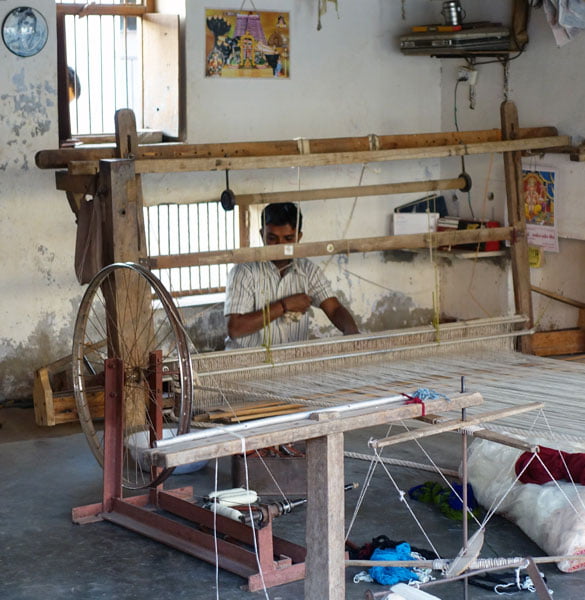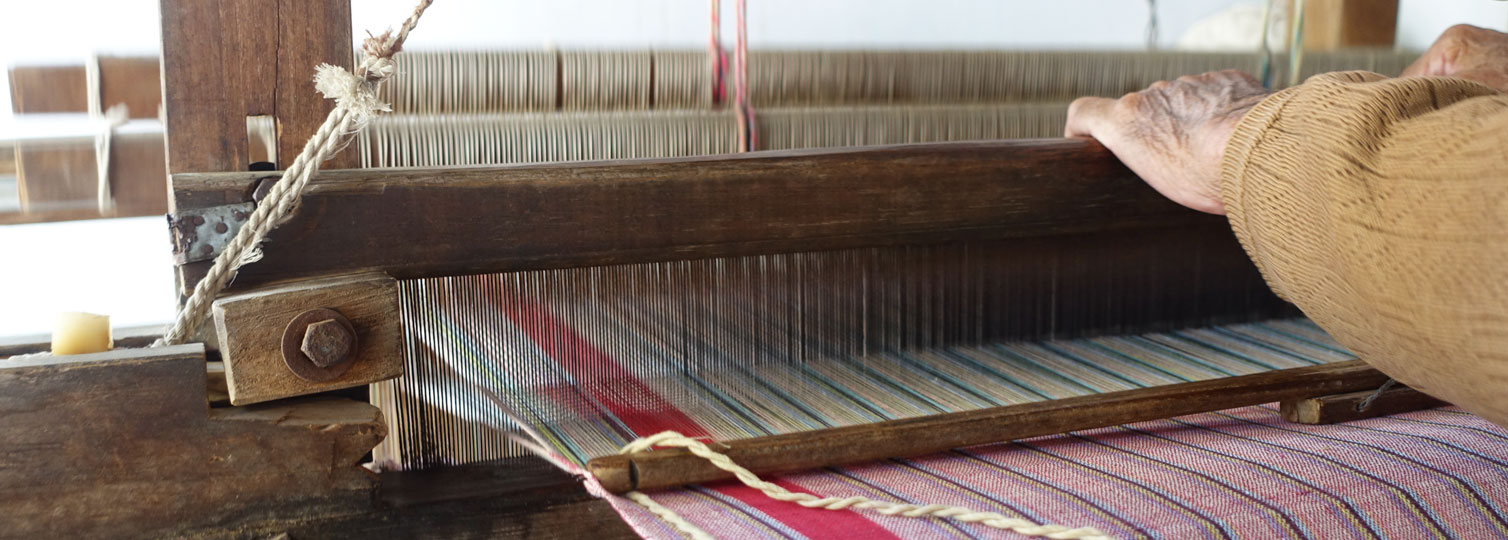
Handloom Weaving
Handloom weaving is the art of interlacing warp and weft threads on looms powered by hand or foot—no electricity required. This makes the process not only sustainable but also deeply human. The slow, careful handling of yarn during weaving helps preserve the natural qualities of the fiber, resulting in fabrics that are durable, breathable, and full of character.
Unlike power loom fabrics, where yarn is subjected to high tension and speed, handloom weaving moves at a slower pace, treating the fibers with greater care. This gentle approach reduces stress and strain on the material, allowing cotton and wool to retain their innate strength and softness. As a result, handwoven fabrics often last longer and feel richer in texture than those made by machine.
We work with handwoven textiles from both the Outer Hebrides of Scotland and several Indian states, including Gujarat, Andhra Pradesh, and Tamil Nadu. Each fabric reflects the spirit of its place of origin—woven traditions shaped by landscape, culture, and generations of skill. In the Outer Hebrides, tweed weaving is deeply intertwined with island life, with patterns and textures that echo the rugged beauty of the land. In India, handwoven cottons and silks carry the artistry of centuries-old techniques, adapted over time but still grounded in community and craft.
We are proud to work with these fabrics, celebrating the story each one tells and the craftsmanship they represent.

India has a long and celebrated history of handweaving, working with cotton, silk, wool, and other natural fibers in rich regional traditions. For centuries, handwoven textiles were part of a thriving cottage industry, renowned worldwide for their quality and craftsmanship. However, during the colonial era and the rise of industrial textile production, this tradition faced a steep decline. Indigenous cotton varieties were replaced by imported, machine-friendly strains, and handcrafted textiles were pushed aside by mass manufacturing. In response, Mahatma Gandhi championed handloom cloth as a symbol of self-reliance and national pride during India’s independence movement.
Today, the handloom sector is still vulnerable in a market dominated by cheaper, industrially produced fabrics. Yet it continues to offer meaningful livelihoods, particularly in rural communities, and stands as an alternative rooted in skill, heritage, and sustainability. At Studio Tolsta, we are committed to supporting this vital industry—not just for the beauty of the cloth it produces, but for the values it represents.


